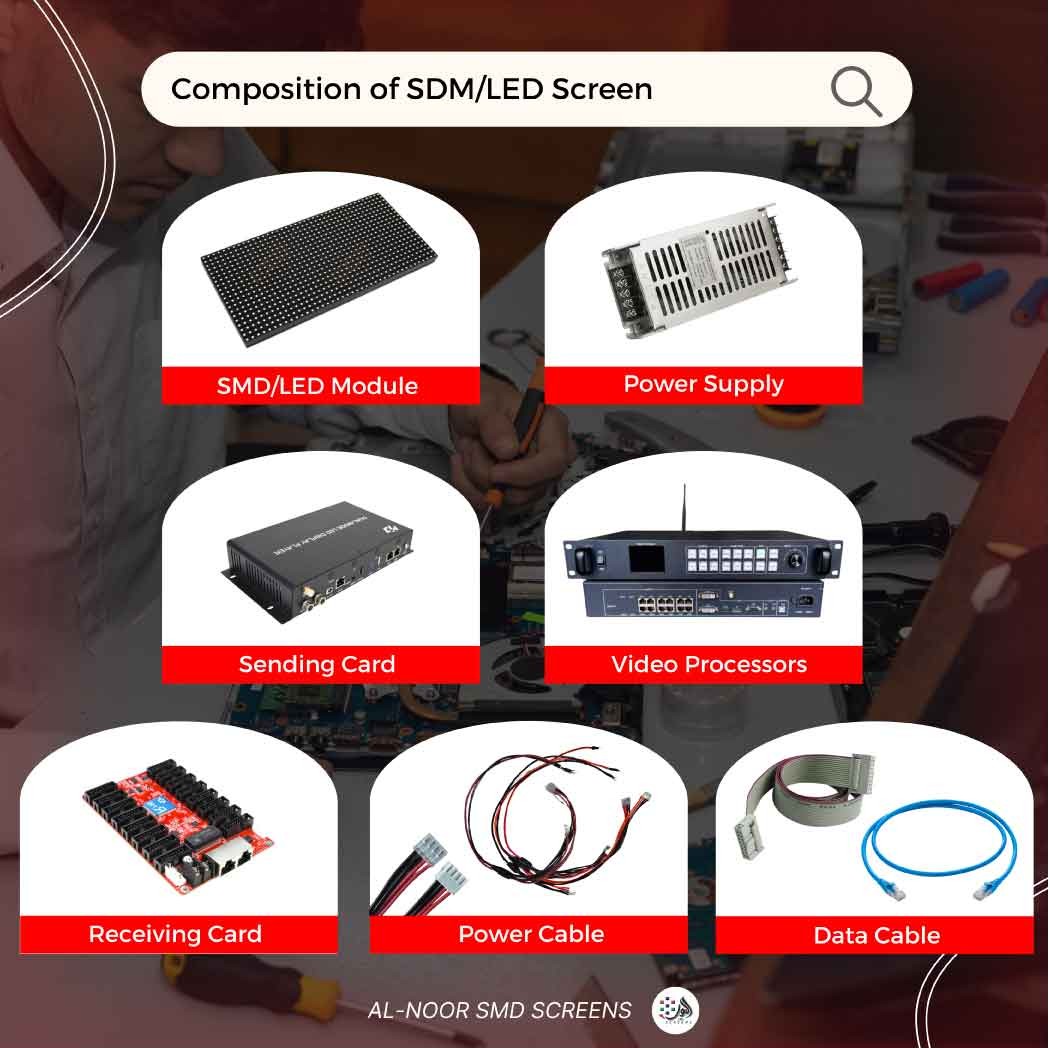Are SMD/LED Displays Repairable or Replaceable?

Before diving into the repairability of SMD/LED displays, it’s important to understand the difference between LCD and SMD/LED technologies.
LCD displays are unibody screen, typically available in fixed sizes and are generally not modular based display.
SMD/LED displays, on the other hand, are modular, meaning they are composed of multiple individual components that can often be repaired or replaced independently.
Let’s break down the main components of an SMD/LED display and discuss whether they are repairable or replaceable:
1. Modules
The module is a core component of any LED/SMD screen. It typically includes:
1) A plastic or alloy housing
2) A PCB (printed circuit board)
3) Lamp beads or pixels (LEDs)
Many parts of the module, such as ICs, electrolytic capacitors, and LED lamp beads, are repairable. However, if the module suffers structural damage, a short circuit, or has reached the end of its service life, it is generally recommended to replace the entire module.
2. Power Supply
Power supplies in SMD/LED displays come in various voltage ratings and are prone to damage due to voltage fluctuations. While repairs may be possible, it is not recommended due to safety and reliability concerns. Replacing the power supply is the safer and more reliable option.
3. Sending Cards
Sending cards manage input data (USB Flash Drive, HDMI, or Wi-Fi via mobile app) and transmit it to receiving cards. They often have onboard storage (e.g., 8GB or 16GB).
In the event of failure, sending cards are usually replaced, not repaired, as they are complex components.
4. Video Processors
Video processors are advanced versions of sending cards with some differences:
1) No onboard storage
2) Multiple output ports
3) Control panel interface
4) Support for multiple displays and live streaming While video processors are typically long-lasting, repairs are possible if the damage is not severe. However, if repair costs exceed 50% of the replacement cost, it is more cost-effective to replace the unit.
5. Receiving Cards
Receiving cards take data from the sending card or video processor and transmit it to the modules. If a receiving card malfunctions, it is replaced, not repaired, due to its intricate design.
6. Power Cables
Power cables deliver electricity to all components within the display system. They are specially designed with connectors and pins suited to different modules and power sources. Any damaged or faulty power cable must be replaced.
*Always use high-quality copper cables for reliability and safety.
7. Data Cables
Two types of data cables are commonly used in SMD screens:
- 16-pin flat cables – transmit data from receiving cards to modules.
- LAN cables (Cat 6) – transmit data from sending cards or video processors to receiving cards.
Both types of cables, along with their connectors, are fully replaceable if any issue arises.
Conclusion:
SMD/LED displays are largely modular and serviceable, making repair and replacement of individual parts feasible and cost-effective.
For optimal performance and safety:
- Repair components where practical.
- Replace when repair is not viable or cost-effective.
- Always use quality materials and seek expert service when necessary.
